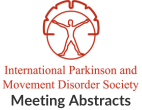Study of eye movements by video-oculography in essential tremors
Objective: To study eye movements by video-oculography (VOG) in ET patients, and to evaluate the possible relationship between oculomotor abnormalities and the hereditary character of…Alterations of cerebello-cortical networks related to the cognitive performance in multiple system atrophy
Objective: This study aims to clarify the cerebellar roles of resting state networks (RSNs) alterations and functional connectivity (FC) changes with regard to the cognitive…Cerebellar tDCS modulates negative emotions recognition in Parkinson’s disease
Objective: To evaluate the role of the cerebellum in recognizing facial expressions in Parkinson's Disease (PD) patients. Background: PD is a neurodegenerative disorder characterized by…MRI and behavioural account of the aging cerebellum
Objective: With the rapidly increasing average age of developed-world population and extended life expectancy, the effects of healthy aging on various brain networks are becoming…Cerebellar atrophy in different motor and non-motor subtypes of Parkinson’s disease
Objective: The cerebellum is involved in Parkinson’s disease (PD). This study was to investigate, using MRI and voxel-based morphometry (VBM), morphometric changes of cerebellum in…Identification of modifiers of the age of onset variance and disease progression in a Dutch cohort of Machado-Joseph disease patients
Objective: In this project, we aim to establish correlations between the length of the CAGexp, AO, and disease progression based on International Cooperative Ataxia Rating…Parkinson’s disease motor symptoms are linked to red nucleus volume and cerebellar metabolism
Objective: To investigate the involvement of the red nucleus (RN) and cerebellum in the motor symptoms of Parkinson's disease (PD). Background: Numerous studies have shown…Gluten sensitivity in progressive cerebellar ataxia patients from India
Objective: To screened a well-defined cohort of patients with cerebellar ataxia for the presence of gluten sensitivity. Background: Cerebellar ataxia is a heterogeneous group of…Abnormal Functional Connectivity in Cerebellar Locomotor Region is associated with the severity of freezing of gait in patients with Parkinson’s disease
Objective: We aim to analyze cerebellar functional connectivity (FC) in PD patients with FOG (PD-FOG). Background: Freezing of gait (FOG) is a disabling disorder frequently…Dissociative effects of thyrotropin releasing hormone on classical cerebellar ataxic signs and cerebellar adaptation in patients with spinocerebellar degeneration
Objective: To reveal effects of TRH [Thyrotropin releasing hormone (protirelin tartrate)] on the prism adaptation task in patients with spinocerebellar degeneration (SCD). Background: The cerebellum…
- « Previous Page
- 1
- …
- 12
- 13
- 14
- 15
- 16
- …
- 20
- Next Page »
